Department of Industrial Engineering
4207 Bell Engineering Center
1 University of Arkansas
Fayetteville, AR 72701
Phone: (479) 575-3156
Fax: (479) 575-8431
Capstone 2020-2021
News Recap of Capstone Symposium Here
Reducing Empty Costs of Relocube Repositioning through Forecasting and Optimization
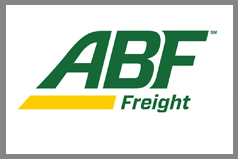
Student Project Manager: Laura Acosta
Other Student Team Members: Tate Thornley, Joseph Cummings, IV, Kate Burrows, and Xander Smith
Industry Partner: ABF Freight
Industry Partner Contacts: Jacob Huffstetler, Senior Financial Analyst; and Kirby Clark, Director, Financial Planning & Analysis
ABF Freight provides less than truckload shipping using a nationwide network of 242 service centers. ABF Freight offers U-Pack, a self-pack moving service that uses containers called ReloCubes to store customer belongings while in transit to the client’s new home. Because U-Pack operates from a nationwide network of service centers, it is common for ABF Freight to reposition ReloCube containers from one service center to another to meet customer demand. The goal of our project is to reduce the empty costs associated with ReloCube repositioning. We created an inventory model to track the movement and storage of ReloCubes throughout the service center network. Based on the inventory model, we created an optimization model that prescribes when, from where, and to where ReloCubes should be repositioned. The inputs to our optimization model include forecasted ReloCube demand based on data from 2016-2020. With the use of our models, ABF Freight now has the ability to reduce the distance and costs associated with ReloCube repositioning.
Improving the Offer Creation Process by Standardizing ArcBest’s Bid Model
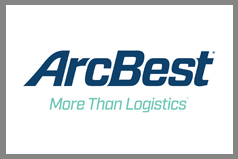
Student Project Manager: Ben Barron
Other Student Team Members: Jackson Marshall, Ben Baser, Blake Parrish, and Joseph Ellis
Industry Partner: ArcBest Corporation
Industry Partner Contacts: Trenton Cason, Lead Logistics Engineer - Yield Strategy and Alex Hoge, Pricing and Supply Chain Manager
ArcBest is an integrated logistics provider headquartered in Fort Smith, Arkansas. They are focused on providing the best customer experience possible with seamless access to a broad suite of logistics capabilities, including truckload, LTL, ocean and air, ground expedite, managed transportation, and warehousing. Our system of interest falls within the yield division where the goal is to create and return pricing bids to potential customers. ArcBest’s yield division currently lacks standardization in bid formats when bid offers are created and transferred to the marketing and sales teams which causes redundancy and extra time for employees across multiple areas. Our system improvement efforts are aimed at automating and standardizing the creation of offers within the bid process. We created a tool in Microsoft Excel using Visual Basic Userforms. The tool is designed to minimize the work required to create an offer. It is impossible to create a tool for every situation a Pricing Engineer will encounter, so we aimed at building an extensible tool that can be the foundation for future add-ons. To estimate the potential impact of our tool on bid processing, we created a simulation model. Based on historical data on 10,000 bids, we simulated bid processing with features such as bid type, sales region, and bid market. Our analysis shows that implementing our solution should yield a 1.9% improvement in engineer utilization which will allow for more bids to be processed without hiring more engineers. Our analysis also shows that our solution will decrease the amount of time required to process a bid by 5% or more than 38,000 hours annually.
Reducing Emergency Department Wait Time by Improving Nurse Scheduling using Simulation
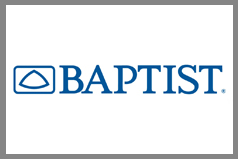
Student Project Manager: Matt Nixon
Other Student Team Members: Junwoo Chang, Jacob Kinney, Matt Murry, and Hawkin Starke
Industry Partner: Baptist Memorial Healthcare
Industry Partner Contacts: Katie Parker, Regional Director of Performance Improvement
Baptist Memorial Healthcare is a large healthcare organization operating in the southeastern United States. Their flagship hospital, located in Memphis, TN, treats more than 65,000 patients in its Emergency Department (ED) every year. The ED is comprised of two main processes: the front-end process includes patient arrival, registration, and initial triage (condition assessment); the back-end process includes patient treatment. Extended patient wait times are the main concern of our industry partner. Our project focuses on the staffing needs of the front-end process with the goal of reducing patient wait time. By reducing patient wait time, the ED can also reduce patients leaving without being seen by a provider (LWBS). To better understand this process, we created a simulation model that mimics the flow of patients into and through the ED. The simulation models arrivals to the ED as a function of time of year, day of week, and time of day. We explore the levels of nursing staff required within the front-end of the ED to provide a high-quality patient experience while maintaining high utilization of nursing staff.
Reducing Length of Stay Overages by Improving Hospitalist’s Rounding Paths and Patient Assignments

Student Project Manager: Lauren Law
Other Student Team Members: Adam Corral, Courtney Johnston, Dania Quintero, and Owen Stuckey
Industry Partner: Baptist Memorial Healthcare
Industry Partner Contacts: Katie Parker, Regional Director of Performance Improvement
Our industry partner is Baptist Memorial Health Care. Our project involves Baptist’s Memphis hospital, the largest hospital in the network. As they do for all hospitals, insurance companies cover treatment for patients at the Memphis hospital a certain number of days based on diagnosis. This number of days is called Observed to Expected (O-E). Baptist is concerned that patient Length of Stay (LOS) too often exceeds the O-E and asked us to investigate potential causes and solutions involving hospitalists. Hospitalists are doctors who make daily rounds to a set of patients to track their progress and ultimately discharge them. We found that hospitalists spend a lot of their day traveling between patient rooms, because patient room location is not considered in the assignment of patients to hospitalists. They also make frequent return trips to their offices in between patient visits to input orders and make notes. This excess travel implies less time to spend with patients. Our goal is to reduce unnecessary travel time for hospitalists, giving them more time for patients, thus leading to reduced LOS. We achieve this goal by improving patient to hospitalist assignment policies and providing workstations closer to patient rooms.
Predicting Transitions of Steel in the Molten Scrap Metal Casting Process
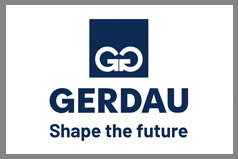
Student Project Manager: Esteban Lopez
Other Student Team Members: Emily Feuerborn, Linden Van Hoose, and Logan Rodriguez
Industry Partner: Gerdau
Industry Partner Contacts: Clinton Johnson, Management Systems Facilitator; Eric Springs, QA & Metallurgy Manager; Alan Doss, Quality Labs Routine Facilitator; and Caleb Collins, Caster Specialist
Gerdau is a steel manufacturing company that produces long steel and special steel products. For this project, we worked with Gerdau’s mill located in Fort Smith, Arkansas. Our system of interest is the transition phase of their continuous casting process. The transition between two customer orders produces a mix of steel. This transition metal does not satisfy the chemistry composition requirements for either order and therefore must be cut out and scrapped. The transition technicians manually estimate the amount of transition metal based on rough guidelines and experience. This approach leads to unacceptable estimation errors. When the transition is overestimated, quality steel meant for the customer is cut, and good steel is wasted. Underestimating does not allow the full transition to be cut out from the quality steel before it moves on to the next phase of the manufacturing process. We improved the estimation process by creating a multiple linear regression model and a random forest model. We implemented these models in a spreadsheet tool that also automates the transition technicians’ guidelines for their current approach.
Reducing Production Costs by Optimizing the Assignment of Parts to Machines using Cost-Benefit Analysis and Monte Carlo Simulation
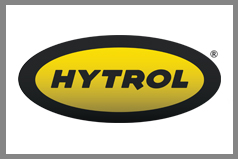
Student Project Manager: Matthew Walters
Other Student Team Members: Cameron Blann, Christofel Enslin, Alyssa McKnight, and Jasia Porchay
Industry Partner: Hytrol Conveyor Company, Inc.
Industry Partner Contacts: Felton Barlow, Manufacturing Engineer; and Ken Nickerson, Industrial Engineering Manager
Hytrol Conveyor Company, Inc., is an engineered to order (ETO) manufacturing company that produces conveyors for customers such as UPS, FedEx, and Amazon. Our project’s system of interest is the laser cutting and punching operations within Hytrol's brown and silver fabrication cells. Our initial goal was to reduce the amount of scrap produced from these two cells. Using Pareto analysis, we discovered a shift in the main cause of scrap from the laser cutter in 2018 to the punch in 2020. From 2018 to 2020, the amount of scrap produced from laser cutters decreased by 50% while the amount of scrap from punches increased by 30%. This shift was a result of Hytrol actively moving the production of their parts from the laser cutter to the punch in an attempt to standardize production. Because Hytrol continues to strive to standardize their operations, we switched our focus from scrap to production costs. We identified a need for a cost-benefit analysis tool to assist Hytrol in determining if switching the production of a specific part from the laser to the punch would be cost effective. A Monte Carlo simulation is used within the tool to account for the uncertainty of certain parameters used to calculate expected net present value, payback period, and return on investment.
Facilitating Chemical Risk Analysis by Organizing Toxicological Databases with a Flexible Open Platform

Student Project Manager: Conner Waybright
Other Student Team Members: Ryan Brim, Yok Lin Ong, Brandon Ward, and William Warner
Industry Partner: Istituto Superiore di Sanità
Industry Partner Contacts: Cristina Parenti - Freelance Consultant; Olga Tcheremenskaia, PhD – Principal Investigator; Cecilia Bossa, PhD – Principal Investigator; and Chiara Laura Battistelli, PhD – Principal Investigator
Istituto Superiore di Sanità (ISS), or the National Health Institute of Italy, is an organization whose mission is to guide public health policy based on scientific research. Demand for a shift away from chemical testing on animals has led ISS to take steps towards analyzing chemical toxicity with alternative computational methods using existing data. ISS has gathered and stored a collection of toxicological data in five data sources called ISSTOX. The purpose of our project is to further develop ISSTOX by increasing the interoperability of the data. Our goal is to facilitate the creation of a public toxicological data storage and analysis system using the ISSTOX data. To accomplish this goal, we must design a system that facilitates chemical risk assessment using legacy data. Integrating the data sources of ISSTOX requires data cleaning and standardization before consolidating the five data sources into a single, chemical relational database. This process requires designing a data model sufficient to store and retrieve the ISSTOX data. This system also includes a user-interface designed to interact with the database, allowing users to conduct useful toxicity analyses. Finally, this system is designed for a publicly available, online setting to increase accessibility to quality toxicity data.
Balancing Inbound and Outbound Flow of Trailers by Predicting Customer Compliance and Seasonality
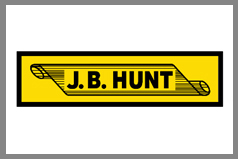
Student Project Manager: Parker Tankersley
Other Student Team Members: Grayson Lee, Remy Kirk, Jacob Underhill, and Alyssa Roth
Industry Partner: J.B. Hunt 360 Box Engineering Team
Industry Partner Contacts: Matt Turner, Logistics Engineer I and Elisa Daniel, Logistics Engineer II
J.B. Hunt is a transportation and logistics company that moves customer freight throughout North America by both truck and railway. We worked with J.B. Hunt’s 360 Box service that offers drop and hook trailer shipping options. 360 Box utilizes J.B. Hunt’s online marketplace to pair third-party and J.B. Hunt trucks to trailers for transport. It is crucial for 360 Box to keep trailer flow in and out of customer markets balanced to avoid empty miles and off-route travel. With our partners within the 360 Box Engineering Team, we identified lack of compliance with expected load volumes and seasonality as the main challenges to maintaining balance. We addressed these challenges by creating a random forest regression model that predicts customer compliance as a function of information contained within award contracts and by creating a 12-month volume forecasting tool using Holt-Winters’ method to account for seasonality. These tools will allow 360 Box to make confident, data-driven trailer balancing decisions. Based on trailer balance situations explored in historical data, our team estimates a 27% reduction the mean absolute percent error in compliance prediction when using our random forest regression model, with additional balancing insights drawn from our seasonality tool.
Improving Driver Integration across Dedicated Contract Services Accounts using Resource Identification and Capacity Planning

Student Project Manager: Brianna Bert
Other Student Team Members: Jose Beltran, Gabriel Figueroa, Sam Griffin, and Emily Rodriguez
Industry Partner: J.B. Hunt Transport Services, Inc.
Industry Partner Contacts: Zach Evans, Senior Logistics Engineer; Graham Nelson, Logistics Engineer III; and Marc Alley, Senior Director of Engineering and Technology
J.B. Hunt Transport Services, Inc., is a transportation and logistics company that serves clients through their five business units: Intermodal, Integrated Contract Services, Truckload, Final Mile, and Dedicated Contract Services (DCS). We partnered with J.B. Hunt’s DCS business unit to investigate ways that we can help increase driver utilization in their western region. DCS Drivers on average work approximately 55 hours/week. Because of fluctuations in account needs due to seasonality and other factors, drivers often are not being utilized to their full potential. Currently, DCS account managers work to integrate drivers across DCS accounts by contacting other account managers to identify available loads when their account is overstaffed or available drivers when their account is understaffed. Standardizing the process for account managers to identify available drivers and loads in other accounts would result in increased driver utilization. To eliminate the need for account managers to independently seek out opportunities for their drivers, we developed a database-driven tool that has two main features: driver availability identification and utilization tracking. This tool aims to identify drivers that meet an account’s specifications while also prioritizing drivers with lower utilization and closer proximity to the account in need of drivers. The database tool will expand the network of available drivers and loads to maximize driver utilization and reduce net driver needs of JB Hunt. The tool will also continuously track utilization and forecast driver needs for all dedicated accounts.
Improving Multi-Stop Truckload Pricing using Random Forest Regression

Student Project Manager: Madeline Suellentrop
Other Student Team Members: Garret Clark, Chase Cottrell, Nicholas Jaco, Jaclyn Walls
Industry Partner: J.B. Hunt Transport Services, Inc.
Industry Partner Contacts: Doug Mettenburg, Becca Luetjen and Kyle Kraichely
J.B. Hunt Transport Services, Inc. is a Fortune 400 company that provides transportation and logistics solutions using trucks and trains to move freight across North America. Within J.B. Hunt, Integrated Capacity Solutions (ICS) conducts third-party logistics by pairing non-contract customers with third-party carriers. ICS uses their own software, ETP, to predict the cost of multi-stop truckloads. Multi-stop truckloads combine Less-Than-Truckload customer orders with a single origin and multiple destinations. The current process used to estimate the cost of a multi-stop shipment has not been evaluated in approximately ten years; therefore, our goal is to improve multi-stop truckload cost prediction. To improve the accuracy of cost estimation, we applied a machine learning technique called random forest regression. Under J.B. Hunt’s current approach, the Mean Absolute Percent Error (MAPE) of multi-stop cost estimates is 20.1%, but with the applied random forest regression model, the MAPE is now 12.5%. With improved estimation accuracy, J.B. Hunt can achieve higher customer satisfaction leading to revenue retention and growth.
Forecasting Category Sales using Data Mining and Predictive Analytics
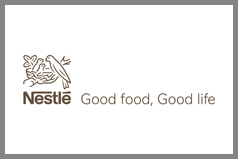
Student Project Manager: Amie Beckwith
Other Student Team Members: Suelly Samudio Ortega, Joseph Goodman, Sebastian Alborta Pereyra
Industry Partner: Nestlé USA
Industry Partner Contacts: Raegon Barnes, Director Category Management; Emily Power, Sr. Analyst Category Management; and Edosa Aibangbee, Manager Category Management
Nestlé USA is a segment of Nestlé, the world’s largest food and beverage company. Nestlé USA provides a variety of food and beverage products to retailers across the United States. Nestlé USA’s office in Rogers, Arkansas, focuses on its Walmart and Sam’s Club operations. Nestlé USA has category advisorships with Walmart, meaning that they have been chosen by Walmart to offer professional advice on product assortment for these categories. Our project is focused on improving Nestlé USA’s sales forecasting system for its category advisorships. Currently, Nestlé USA simply uses last year’s sales as an estimate for this year’s sales. This system has proven to be inefficient as it is entirely backwards looking. To improve Nestlé USA’s forecasting system, we implemented ARIMA forecasting models using R. These models incorporate binary holiday variables and detect growth and decline over time. Our analysis shows that these models offer a clear improvement from the current system, especially when using short forecasting horizons. To add ease to the forecasting process, we also created a user interface for our forecasting models using R Shiny. This interface allows the user to make custom selections and press a button to output the desired forecast.
Automated Pairing of Clients to Job Opportunities based on a Quantitative Assessment of Skills and Abilities
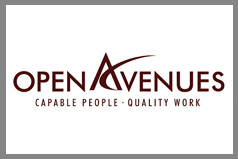
Student Project Manager: Lawson Porter
Other Student Team Members: Patrick Dougherty, Andrew Powers, and Hatem Alsayed
Industry Partner: Open Avenues
Industry Partner Contacts: Jeff Hairston, Training Center and Operations Manager
We partnered with Open Avenues, a local non-profit organization that helps people with disabilities (clients) attain vocational goals. Open Avenues offers a Community Employment service which seeks to place clients into job opportunities in the local community; however, the current process has challenges with matching clients to jobs that are appropriate for their abilities. To improve this service, our team developed an automated abilities-based tool which allows Open Avenues staff to match clients to jobs from a database of over 800 occupations. The tool also allows for the input and storage of pertinent client information, including the results of the abilities assessment clients complete upon arrival to Open Avenues. This tool will equip Open Avenues with the client-specific recommendations needed to place clients into roles where they can succeed both personally and professionally.
Improving Course and Classroom Scheduling Policies through Correlation Analysis and Forecasting
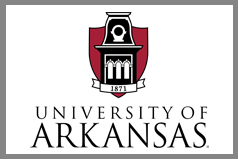
Student Project Manager: Michael Rechtin
Other Student Team Members: Alyssa Bobalik, Olivia Hope, and Jacob Pannell
Industry Partner: The Office of the Provost at the University of Arkansas
Industry Partner Contacts: Gary Gunderman, Executive Director of Institutional Research and Assessment and Colleen M. Briney, Vice Provost for Planning
This project aims to assist the Office of the Provost at the University of Arkansas by analyzing and improving the course and classroom scheduling process. The responsibilities of the Office of the Provost include overseeing academic policies, budgetary affairs, and the three parties that control this scheduling process: the colleges, their departments, and the Office of the Registrar. The scheduling process starts by exporting the previous year’s semester schedule. Next, all course details are edited and approved by all three parties before courses are assigned classrooms. Later, if a student wishes to enroll in or drop a course after enrollment, an override is used. Within the scheduling process, we focus on increasing classroom utilization, forecasting core course enrollment, and improving the override sub-process. We evaluate the relationship between classroom utilization and the characteristics of a room using correlation analysis. Additionally, we analyze classroom utilization by time of day and the day of the week. Next, we forecast core course enrollment using ARIMA. Lastly, we recommend improvements to the Department of Industrial Engineering’s override process.
Increasing Violation Capture Rates by Improving Parking Control Routing and Scheduling

Student Project Manager: Warren Lewis
Other Student Team Members: Sam McKinney, Kyle Sprang, and P. Marshal Smith
Industry Partner: University of Arkansas Transit and Parking Department
Industry Partner Contacts: Gary K. Smith, Director, Transit and Parking and Andy Gilbride, Project/Program Manager
The University of Arkansas Transit and Parking Department serves the university community by providing transit and parking options to staff, students, faculty, and visitors. It is important to the department’s mission that fair parking opportunities are provided, so vehicles in violation of regulations should be identified and issued a citation. The department is concerned that a number of parking violations are missed by their Parking Enforcement staff. The department’s enforcement is made up of Parking Control Officers (PCOs) who are in charge of patrolling the university parking lots and garages in order to issue citations for any identified parking violations. We worked with the department to increase the effectiveness of the parking patrol process. We used data analysis, system engineering, and optimization techniques to provide the department with updated PCO routing and scheduling processes that improve the system’s parking violation capture rate by reducing travel time and improving patrol coverage.